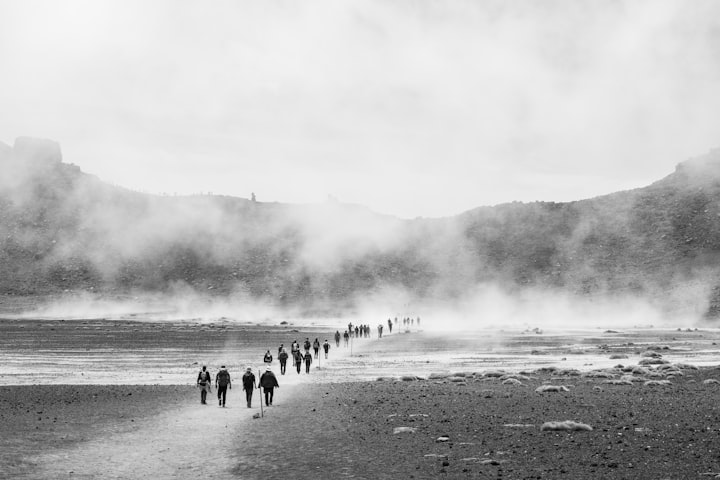Prison al catraz documentary
Alcatraz, otherwise called "The Stone," was a greatest security government jail situated on Alcatraz Island in San Francisco Narrows, California. It worked from 1934 to 1963 and housed a portion of America's most infamous hoodlums, including Al Capone, Robert Stroud (the "Birdman of Alcatraz"), and George "Automatic rifle" Kelly. The jail was intended to be escape-confirmation, with high walls, weapon towers, and an encompassing shark-swarmed sea. In spite of these actions, a few detainees endeavored break, and some were fruitful. The jail was shut because of high working expenses and crumbling conditions, and today it is a famous
vacation destination and a Public Noteworthy Milestone.
Alcatraz is known for its severe and brutal circumstances, with detainees investing the majority of their energy in isolation. The cells were little and meagerly outfitted, with just a bunk, sink, and latrine. The jail had a severe arrangement of rules and guidelines, and any infringement were met with serious discipline. Verifiable foundation of jail Alcatraz
Detainees were permitted restricted appearance and correspondence with the rest of the world. In spite of its famous standing, Alcatraz was viewed as perhaps of the most secure jail in the US, with no announced occurrences of uproars or attacks. Its heritage as a high-security jail keeps on enrapturing the public's creative mind, and the tales of its detainees and their departure endeavors stay a wellspring of interest and interest.
Alcatraz Island, situated in San Francisco Straight, was initially utilized as a tactical fortress during the nineteenth 100 years. In 1861, during the American Nationwide conflict, Alcatraz was assigned as a tactical jail to house Confederate detainees of war. Throughout the long term, the jail populace extended to incorporate military detainees, as well as regular citizen convicts. In 1933, Alcatraz was formally assigned as a government jail, and it became perhaps of the most famous prison in American history.
The jail's area on a disconnected island in the narrows made it an optimal spot to house a portion of the country's most risky hoodlums. The detainees at Alcatraz were viewed as the "most awful of the most exceedingly terrible," and the jail's unforgiving circumstances were intended to break their spirits and keep them from getting away. Detainees at Alcatraz were dependent upon a severe day to day schedule that remembered working for the jail's clothing or kitchen, and investing a large portion of their free energy in their cells.
Alcatraz was likewise known for its inventive safety efforts, which included weighty watchman watches, equipped pinnacles, and energized walls. In spite of these actions, there were a few getaway endeavors during the jail's set of experiences, including the renowned 1962 "Departure from Alcatraz" when three detainees figured out how to get away, despite the fact that it is broadly accepted they kicked the bucket in the endeavor.
The jail was shut in 1963 because of rising working expenses and breaking down conditions. Today, Alcatraz Island is a famous vacation spot and a sign of the dull history of the American reformatory framework. The jail's heritage as an image of discipline and control lives on, and its story keeps on intriguing individuals all over the planet.
The detainees who lived and kicked the bucket at jail Alcatraz
Alcatraz Government Prison was home to the absolute most famous hoodlums of now is the right time. The jail housed around 1,576 prisoners during its 29 years of activity, and large numbers of these people were viewed as the most perilous and vicious wrongdoers in the country. Prisoners at Alcatraz came from varying backgrounds and included burglars, killers, and famous hoodlums like Al Capone and George "Assault rifle" Kelly.
Day to day environments at Alcatraz were famously unforgiving, and detainees were exposed to a severe day to day schedule that included negligible collaboration with others and extended periods of difficult work. Regardless of this, a few detainees had the option to adjust to life at Alcatraz and even flourish inside its walls. For instance, detainee Robert Stroud, otherwise called the "Birdman of Alcatraz," was known for his skill in bird reproducing and research while carrying out his punishment.
Tragically, not all detainees at Alcatraz endure their time in jail. Throughout the long term, there were a few passings at the jail, including suicides, murders, and passings coming about because of sicknesses and mishaps. One of the most notable passings at Alcatraz was that of Robert Franklin Stroud, a sentenced killer who burned through 54 years in jail, remembering 42 years for isolation. Stroud kicked the bucket in the jail clinic in 1963 because of kidney disappointment.
Today, the accounts of the detainees who lived and passed on at Alcatraz keep on interesting individuals all over the planet. Their encounters offer a brief look into the brutal real factors of the American punitive framework during the mid-twentieth hundred years and act as a wake up call of the effect of detainment on people and society.
The jail's remarkable engineering and design
The engineering and format of Alcatraz Government Prison were planned in view of safety and control. The jail was based on an island in San Francisco Cove, encompassed by cold and misleading waters that made break almost unthinkable. Moreover, the jail's one of a kind engineering and format were intended to additionally keep prisoners from endeavoring to get away.
The cell house at Alcatraz was a monstrous cement and steel structure that was four stories tall and housed north of 600 cells. Every cell was outfitted with a little bed, a latrine, and a sink. The cells were organized in lengthy lines, with tight walkways isolating them. The cells had no windows, and the main wellspring of regular light came from the high roof lookout windows.
The jail's format was likewise intended to keep prisoners from collaborating with one another. The cell house was isolated into four blocks, every one of which had its own amusement yard. The yards were encircled by tall substantial walls that kept prisoners from seeing or imparting
with one another. What's more, the jail's eating lobby was planned with individual tables that kept prisoners from connecting during dinner times.
The jail's engineering and format were additionally intended to give greatest security to the gatekeepers. The jail was furnished with an organization of cautions, weapon displays, and lookouts that gave steady reconnaissance of the detainees. Furthermore, the jail had various security highlights, including a progression of entryways and doors that could be shut immediately to segregate or contain prisoners.
Today, the jail's remarkable engineering and design keep on being a wellspring of interest for guests to Alcatraz Island. The jail's plan fills in as a sign of the lengths that were taken to keep up with control and security in one of the country's most famous prisons.
The jail's infamous standing
Alcatraz Government Prison was known for its famously cruel circumstances, severe guidelines, and its capacity to equal the initial investment the most solidified hoodlums. The jail's standing was based on its unforgiving disciplinary measures and the consistent danger of discipline for any infringement of the standards.
Detainees at Alcatraz were exposed to a severe day to day schedule that pretty much ruled out private articulation or uniqueness. They were not permitted to talk during dinners, and their correspondence with one another was restricted. The jail's unforgiving everyday environments and severe guidelines frequently prompted an elevated degree of strain and hostility among the prisoners.
The jail's standing as an unpreventable fortification additionally added to its reputation. The confined area of the jail, encompassed by misleading waters, caused getaway to appear to be unimaginable. Notwithstanding this, there were a few break endeavors all through the jail's set of experiences, including the well known 1962 "Getaway from Alcatraz" when three prisoners figured out how to get away, in spite of the fact that it is generally accepted they kicked the bucket in the endeavor.
Alcatraz additionally acquired reputation for the high-profile detainees who were housed there. The jail was home to probably the most famous lawbreakers of now is the ideal time, including Al Capone, Assault rifle Kelly, and Robert Stroud, otherwise called the "Birdman of Alcatraz." The jail's standing as a position of discipline and control pulled in the consideration of general society, and it turned into an image of the American corrective framework's way to deal with managing the country's most risky wrongdoers.
Today, Alcatraz's standing keeps on intriguing individuals all over the planet. The jail's inheritance fills in as a sign of the dull history of the American reformatory framework and the effect of imprisonment on people and society. Alcatraz stays an image of discipline and control, and its story keeps on charming individuals' minds.
The detainees who got away from jail Alcatraz
In spite of its standing as a certain stronghold, there were a sum of 14 realized get away from endeavors from Alcatraz Government Prison, including 36 detainees. Notwithstanding, none were essentially as popular as the 1962 getaway, which saw three detainees effectively break out of the jail. Forthright Morris, John Anglin, and Clarence Anglin had gone through months arranging the break, utilizing taken materials to make a pontoon and life coats to explore the misleading waters of the San Francisco Narrows.
Notwithstanding a broad hunt and examination, the three escapees were rarely found. The departure stays one of the most baffling and charming jail breaks ever, with numerous speculations and reports circling throughout the long term about the destiny of the escapees.
About the Creator
xis-kaab12
In their professional career, Xis-kaab has been recognized for their ability to turn complex ideas into tangible and impactful products, always striving for excellence in their work and pushing the boundaries
Enjoyed the story? Support the Creator.
Subscribe for free to receive all their stories in your feed. You could also pledge your support or give them a one-off tip, letting them know you appreciate their work.







Comments
There are no comments for this story
Be the first to respond and start the conversation.